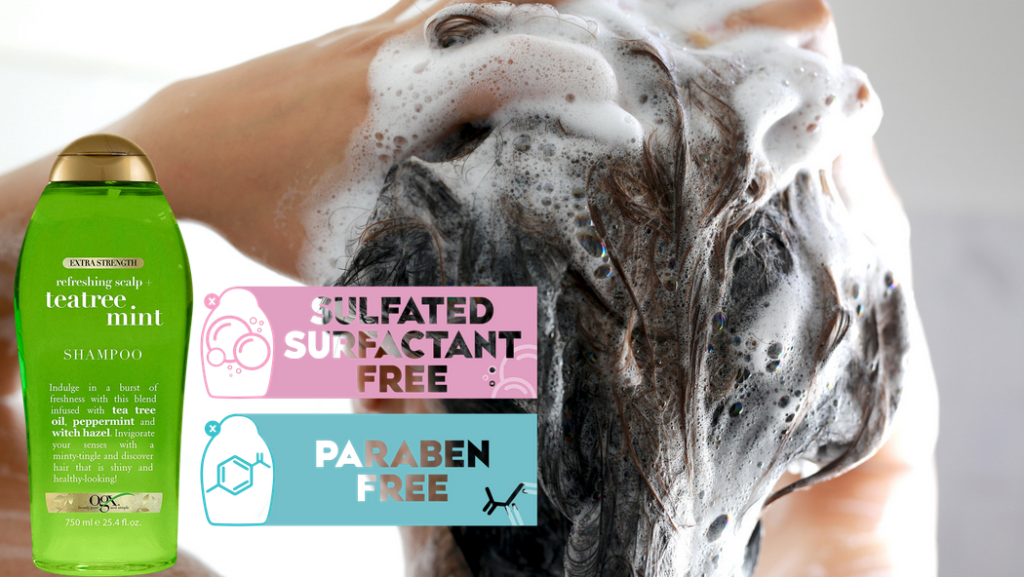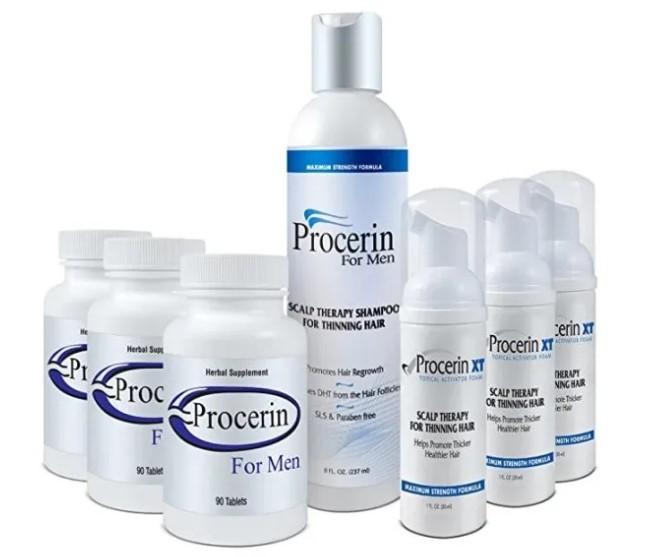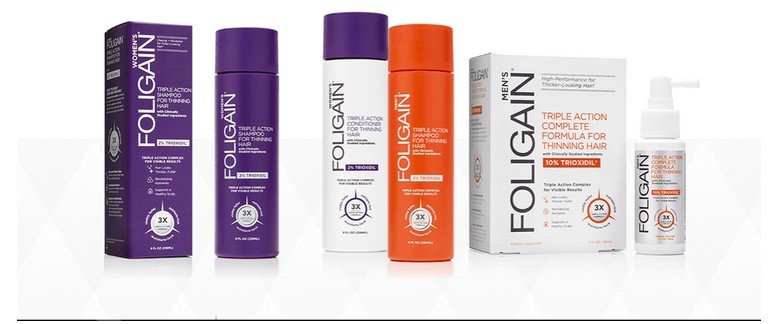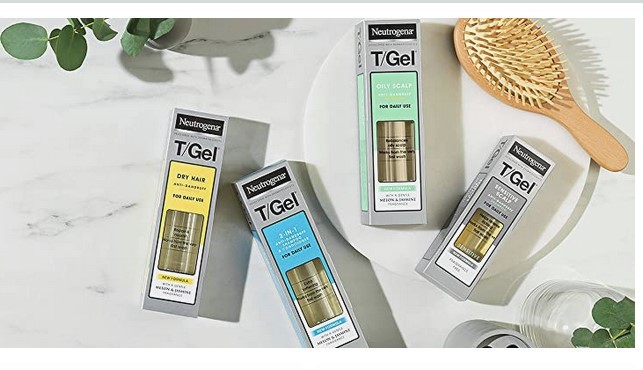Explore the controversy surrounding “ogx tea tree mint shampoo hair loss“. This comprehensive review examines user experiences, the science behind the ingredients, and the ongoing lawsuit against Johnson & Johnson. Discover alternatives to OGX shampoos and learn how to choose products that are good for your hair.
In the ever-evolving world of hair care, certain products and brands manage to stand out, sparking discussions, debates, and sometimes even controversies. One such product is the OGX Tea Tree Mint Shampoo, a product that has become a hot topic due to its alleged link to hair loss. This shampoo, known for its invigorating blend of tea tree oil, milk proteins, and peppermint oil, has been lauded by some for its refreshing scent and potential hair growth benefits. However, others have raised concerns about potential scalp irritation and, more worryingly, hair loss.
In this comprehensive review, we will delve into the heart of this controversy, examining the ingredients of the OGX Tea Tree Mint Shampoo, user experiences, and the ongoing class-action lawsuit against Johnson & Johnson, the parent company of OGX. Our goal is to provide you with a balanced perspective, enabling you to make an informed decision about whether this product is right for you.
If you’ve ever wondered about the effects of your shampoo on your hair health, you’re not alone. Many of us are unaware of the potential harm some ingredients can cause. For a deeper understanding of this topic, check out our detailed post on Bad Shampoo Ingredients.
In the following sections, we’ll take a closer look at the OGX Tea Tree Mint Shampoo, its ingredients, and the claims of hair loss associated with it. We’ll also explore other OGX products and provide some alternatives for those concerned about hair health. So, if you’re ready to dive in, keep reading!
Remember, knowledge is power, especially when it comes to taking care of your hair. Let’s get started!
Detailed Review of OGX Tea Tree Mint Shampoo
The OGX Tea Tree Mint Shampoo has made a name for itself in the hair care industry, thanks to its unique blend of active ingredients and the invigorating experience it promises. But what exactly does this product offer, and why has it become a subject of controversy? Let’s delve deeper.
Product Description
The shampoo is part of OGX’s diverse range of hair care products, each designed to cater to specific hair needs. The Tea Tree Mint variant is marketed as a hydrating product that can help nourish and moisturize the hair and scalp, thanks to its blend of Australian tea tree oils, milk proteins, and peppermint oil. The product is also sulfate-free, a feature that many users appreciate as sulfates can strip the hair of its natural oils, leading to dryness and potential damage.
User Experiences
Like any product, the OGX Tea Tree Mint Shampoo has received mixed reviews. Many users praise the product for its refreshing scent and the cooling sensation it provides, which can be particularly soothing for those with itchy or irritated scalps. Some users have also reported that the shampoo leaves their hair feeling soft, clean, and manageable.
However, not all reviews are glowing. Some users have reported experiencing scalp irritation after using the product, with symptoms ranging from mild itching to more severe reactions like redness and flaking. More concerning are the reports of hair loss, with some users claiming that they noticed an increase in hair fall after using the shampoo.
Ingredient Analysis
The ingredient list of the OGX Tea Tree Mint Shampoo reveals a mix of natural and synthetic components. The key ingredients include:
- Tea Tree Oil: Known for its antifungal and antibacterial properties, tea tree oil can help cleanse the scalp and prevent issues like dandruff.
- Milk Proteins: These can help strengthen and moisturize the hair, preventing breakage.
- Peppermint Oil: This provides a cooling sensation and can help stimulate blood flow to the scalp, potentially promoting hair growth.
However, the shampoo also contains DMDM hydantoin, a preservative that releases formaldehyde, a known carcinogen. This ingredient has been linked to scalp irritation and hair loss, leading to a class-action lawsuit against Johnson & Johnson. For more information on harmful ingredients in shampoos, check out our post on Bad Shampoo Ingredients.
In the next section, we’ll delve deeper into the controversy surrounding OGX shampoos and hair loss, and explore the ongoing lawsuit against Johnson & Johnson. If you’re concerned about the health of your hair and the products you use, you won’t want to miss it. Continue reading here.
Understanding Hair Loss
Hair loss is a common concern for many people, and it can be caused by a variety of factors. Understanding these factors can help you make informed decisions about your hair care routine and the products you use. In this section, we’ll delve into the causes of hair loss and how certain ingredients in shampoos can contribute to this issue.
Causes of Hair Loss
Hair loss can occur for many reasons, including:
- Genetics: Hereditary-pattern baldness is the most common cause of hair loss. It occurs with aging and follows a pattern of a receding hairline and hair thinning on the crown.
- Hormonal changes: Conditions such as pregnancy, childbirth, menopause, and thyroid problems can cause hair loss.
- Medical conditions: Certain diseases, such as alopecia areata, scalp infections, and trichotillomania (hair-pulling disorder), can lead to hair loss.
- Medications and supplements: Hair loss can be a side effect of certain drugs, such as those used for cancer, arthritis, depression, heart problems, gout, and high blood pressure.
- Radiation therapy to the head: The hair may not grow back the same as it was before.
- A very stressful event: Many people experience a general thinning of hair several months after a physical or emotional shock. This type of hair loss is temporary.
Shampoo Ingredients and Hair Loss
While shampoo is a staple in most hair care routines, not all shampoos are created equal. Some contain harsh ingredients that can damage your hair and scalp, potentially leading to hair loss. Here are some ingredients to watch out for:
- Sulfates: These are detergents used in many shampoos to create a lathering effect. However, they can strip the hair of its natural oils, leading to dryness, breakage, and hair loss.
- Parabens: Used as preservatives in many personal care products, parabens have been linked to hormonal disruptions, which can potentially lead to hair loss.
- Formaldehyde-releasing preservatives: These chemicals, such as DMDM hydantoin, slowly release small amounts of formaldehyde over time. Formaldehyde is a known carcinogen and can cause scalp irritation and hair loss.
If you’re dealing with hair loss, it’s crucial to choose a shampoo that’s gentle on your hair and scalp. Look for products free of sulfates, parabens, and formaldehyde-releasing preservatives. For more tips on promoting hair regrowth, check out our post on Can Hair Grow Back After Thinning?.
In the next section, we’ll delve into the controversy surrounding OGX shampoos and hair loss. We’ll discuss the allegations against the brand and the ongoing lawsuit. If you’re an OGX user or considering trying their products, you won’t want to miss it. Continue reading here.
The Controversy: OGX Shampoo and Hair Loss
The OGX brand, owned by Johnson & Johnson, has been at the center of a controversy due to allegations that their shampoos, including the Tea Tree Mint variant, cause hair loss. This has led to a class-action lawsuit and a flurry of online discussions, with users sharing their experiences and concerns.
The Allegations
The allegations against OGX began surfacing online, with users reporting increased hair fall and scalp irritation after using their shampoos. Some users claimed that their hair loss was so severe that it led to visible thinning and bald spots. These reports sparked concern among consumers, leading to further investigation into the ingredients used in OGX shampoos.
The ingredient that has received the most attention is DMDM hydantoin, a preservative that releases small amounts of formaldehyde over time. Formaldehyde is a known carcinogen and can cause scalp irritation and hair loss. Despite these concerns, DMDM hydantoin is still used in many personal care products, including shampoos.
The Lawsuit
In response to the allegations, a class-action lawsuit was filed against Johnson & Johnson in 2021. The lawsuit claims that the company failed to warn consumers about the potential risks associated with using their products, specifically the risk of hair loss and scalp irritation due to the presence of DMDM hydantoin.
Johnson & Johnson has denied the allegations, stating that their products are safe when used as directed and that they comply with all applicable regulations. The lawsuit is still ongoing, and a final decision has not yet been reached.
What This Means for Consumers
The controversy surrounding OGX shampoos and hair loss serves as a reminder of the importance of understanding the ingredients in our personal care products. If you’re experiencing hair loss and suspect that your shampoo may be the culprit, it may be worth switching to a different product and consulting with a healthcare professional or a trichologist.
For more information on how to choose the right shampoo for your hair type and concerns, check out our post on Best Shampoo for Bald Head.
In the next section, we’ll explore some alternatives to OGX shampoos, focusing on products that are gentle on the hair and scalp and free of potentially harmful ingredients. If you’re in the market for a new shampoo, you won’t want to miss it. Continue reading here.
Other OGX Products and Hair Loss
The OGX brand offers a wide range of hair care products, each designed to cater to specific hair needs. However, the controversy surrounding the Tea Tree Mint Shampoo has led many consumers to question the safety of other products in the OGX line. In this section, we’ll take a closer look at some of these products and the concerns associated with them.
OGX Biotin & Collagen Shampoo
This shampoo is marketed as a volume-boosting product that can help thicken and texturize the hair. It contains biotin and collagen, which are known for their hair-strengthening properties. However, like the Tea Tree Mint variant, this shampoo also contains DMDM hydantoin. Some users have reported experiencing hair loss after using this product.
OGX Argan Oil of Morocco Shampoo
This product is touted for its hydrating properties, thanks to the inclusion of argan oil, a potent moisturizer. However, it also contains DMDM hydantoin, and there have been reports of hair loss associated with its use.
OGX Coconut Milk Shampoo
This shampoo is designed to nourish and strengthen the hair with a blend of coconut milk, coconut oil, and egg white proteins. Despite its appealing ingredient list, it also contains DMDM hydantoin, and some users have reported hair loss after using this product.
The Common Thread: DMDM Hydantoin
The common thread among these products is the inclusion of DMDM hydantoin, the preservative linked to the ongoing lawsuit against Johnson & Johnson. If you’re concerned about hair loss, it may be worth considering products that do not contain this ingredient.
Alternatives to Consider
If you’re in the market for a new shampoo, there are plenty of options that are free of potentially harmful ingredients. Look for products that are sulfate-free, paraben-free, and free of formaldehyde-releasing preservatives. Some brands to consider include Pureology, Shea Moisture, and Briogeo.
Remember, everyone’s hair is different, and what works for one person may not work for another. It may take some trial and error to find the right product for your hair type and concerns. For more tips on choosing the right shampoo, check out our post on Best Shampoo for Bald Head.
In the next section, we’ll delve into some frequently asked questions about OGX shampoos and hair loss. If you’ve been following the controversy and have questions of your own, you won’t want to miss it. Continue reading here.
Other OGX Products and Hair Loss
If the controversy surrounding OGX shampoos has you rethinking your hair care routine, you’re not alone. Many consumers are now seeking alternatives that are gentle on the hair and scalp and free of potentially harmful ingredients. In this section, we’ll explore some of these alternatives and what they have to offer.
Pureology Hydrate Shampoo
This shampoo is a favorite among those with dry and color-treated hair. It’s sulfate-free, paraben-free, and vegan, making it a great choice for those seeking a gentle and eco-friendly option. Users praise it for its ability to hydrate and protect the hair without stripping color.
Shea Moisture Raw Shea Butter Moisture Retention Shampoo
This product is known for its hydrating properties, thanks to the inclusion of shea butter, argan oil, and sea kelp. It’s free of sulfates, parabens, and other harsh chemicals, and it’s also cruelty-free and ethically sourced. Users love how it leaves their hair feeling soft and moisturized.
Briogeo Don’t Despair, Repair! Super Moisture Shampoo
This shampoo is designed to repair damaged hair and enhance its resilience over time. It’s free of sulfates, parabens, and silicones, and it’s also cruelty-free and gluten-free. Users report that it leaves their hair feeling clean, soft, and less prone to breakage.
Avalon Organics Biotin B-Complex Thickening Shampoo
This product is designed to help strengthen the hair and reduce breakage, thanks to its biotin B-complex formula. It’s free of sulfates, parabens, and synthetic colors and fragrances, and it’s also vegan and cruelty-free. Users appreciate its thickening effect and the volume it adds to their hair.
How to choose good shampoo for hair growth?
When choosing a shampoo, it’s important to consider your hair type and concerns, as well as the ingredients in the product. If you’re dealing with hair loss, it may be worth trying a shampoo that’s free of harsh chemicals and contains ingredients known to promote hair health. For more tips on promoting hair regrowth, check out our post on Can Hair Grow Back After Thinning?.
In the next section, we’ll answer some frequently asked questions about OGX shampoos and hair loss. If you’ve been following the controversy and have questions of your own, you won’t want to miss it. Continue reading here.
Pros and Cons
OGX Tea Tree Mint Shampoo is a well-known product in the hair care market, recognized for its unique blend of tea tree oil and mint extract. This shampoo has been lauded for its potential benefits but also criticized for some of its features. Here’s a detailed look at the pros and cons based on user reviews and product analysis:
Pros:
- Promotes hair growth: The tea tree oil in the shampoo is known to stimulate hair follicles and promote hair growth.
- Helps to treat dandruff: Tea tree oil is also known for its anti-fungal properties, which can help combat dandruff.
- Reduces scalp inflammation: The soothing properties of mint can help reduce scalp inflammation.
- Refreshing and cooling on the skin: The mint extract provides a cooling sensation, which can be particularly refreshing during hot weather or after a workout.
- Lovely minty scent: Many users enjoy the fresh, minty scent of this shampoo.
- SLS-free and paraben-free: This shampoo is free from potentially harmful chemicals like SLS (Sodium Lauryl Sulfate) and parabens.
- Hydrating power and pleasing scent: The shampoo is known for leaving hair feeling hydrated and smelling great.
- Lathers well and leaves hair and scalp feeling soft: Users have reported that the shampoo lathers well and leaves their hair and scalp feeling soft and clean.
- Gives a deep clean while moisturizing hair: The shampoo is designed to deeply cleanse the hair while also providing necessary moisture.
Cons:
- The oils in the shampoo work best on thicker hair: Some users with thin or fine hair have reported that the oils in the shampoo can weigh their hair down.
- The minty fragrance may be too strong for some people: While many people enjoy the minty scent, it may be too strong or overpowering for some.
In conclusion, OGX Tea Tree Mint Shampoo offers a range of benefits for hair and scalp health, including promoting hair growth, reducing dandruff and inflammation, and providing a refreshing and cooling sensation. However, it may not be suitable for everyone, particularly those with thin hair or sensitivity to strong fragrances. As with any product, it’s important to consider your individual hair type and preferences before making a decision.
| Pros | Cons |
|---|---|
| Promotes hair growth | Oils in the shampoo may weigh down thin hair |
| Helps to treat dandruff | Minty fragrance may be too strong for some |
| Reduces scalp inflammation | |
| Refreshing and cooling on the skin | |
| Lovely minty scent | |
| SLS-free and paraben-free | |
| Hydrating power and pleasing scent | |
| Lathers well and leaves hair and scalp feeling soft | |
| Gives a deep clean while moisturizing hair |
Ogx Hair loss Side Effect
The potential side effects of using OGX hair care products, particularly those containing the ingredient DMDM hydantoin, include:
- Scalp Irritation: DMDM hydantoin, a preservative found in some OGX products, can cause irritation to the scalp. This irritation can lead to discomfort and itching.
- Hair Loss: There are claims that the use of these products can lead to hair shedding. This is believed to be due to an allergic reaction on the scalp’s skin, which may temporarily interfere with the functioning of the hair follicles.
- Allergic Reactions: Some individuals may experience allergic reactions to DMDM hydantoin. These reactions can vary from mild to severe, depending on the individual’s sensitivity.
- Potential Carcinogenic Effects: DMDM hydantoin is a known formaldehyde releaser. Formaldehyde is a recognized carcinogen, which means it has the potential to cause cancer. However, the risk is considered low as the amount of formaldehyde released is typically very small.
It’s important to note that these side effects are not guaranteed to occur and may vary from person to person. If you experience any adverse effects after using OGX products, it’s recommended to stop using them and consult with a healthcare professional.
Frequently Asked Questions
1. Does OGX Tea Tree Mint Shampoo cause hair loss?
There have been allegations that OGX Tea Tree Mint Shampoo, along with other OGX products, can cause hair loss due to the inclusion of the preservative DMDM hydantoin. However, these allegations are currently the subject of a lawsuit, and no definitive conclusion has been reached.
2. What is DMDM hydantoin?
DMDM hydantoin is a preservative that releases small amounts of formaldehyde over time. Formaldehyde is a known carcinogen and can cause scalp irritation and hair loss.
3. Are there safe alternatives to OGX shampoos?
Yes, there are many shampoos on the market that are free of potentially harmful ingredients. Some brands to consider include Pureology, Shea Moisture, Briogeo, and Avalon Organics. For more information on choosing the right shampoo for your hair type and concerns, check out our post on Best Shampoo for Bald Head.
4. What should I do if I’m experiencing hair loss?
If you’re experiencing hair loss, it’s important to consult with a healthcare professional or a trichologist. They can help determine the cause of your hair loss and suggest appropriate treatments. For more tips on dealing with hair loss, check out our post on Can Hair Grow Back After Thinning?.
Conclusion
The controversy surrounding OGX shampoos and hair loss has undoubtedly caused a stir in the hair care industry. While the lawsuit against Johnson & Johnson is ongoing, it’s clear that consumers are becoming more aware and cautious about the products they use on their hair.
If you’re concerned about hair loss, it’s important to remember that there are many factors that can contribute to this condition, including genetics, diet, stress, and yes, the products you use on your hair. It’s always a good idea to consult with a healthcare professional or a trichologist if you’re experiencing significant hair loss.
In the meantime, there are plenty of alternatives to OGX shampoos that are free of potentially harmful ingredients. Brands like Pureology, Shea Moisture, Briogeo, and Avalon Organics offer a range of products that cater to different hair types and concerns.
Remember, everyone’s hair is different, and what works for one person may not work for another. It may take some trial and error to find the right product for your hair. For more tips on dealing with hair loss and choosing the right shampoo, check out our post on Can Hair Grow Back After Thinning?.
In the end, the most important thing is to choose products that make you feel good about your hair. After all, your hair is a part of who you are, and you deserve to feel confident and beautiful, no matter what.
For more information on hair care and hair loss, continue exploring our site. You might find our post on Does Dove Shampoo Cause Hair Loss? particularly interesting. Happy reading!
- AI Powered Bald Filter Online 2024: See Yourself with No Hair! - January 19, 2024
- Harklinikken Bad Reviews 2024: Analyzing Negative Feedbacks - January 18, 2024
- How to Get the Alex Eubank Hair | Step-By-Step Tutorial 2024 - January 18, 2024







